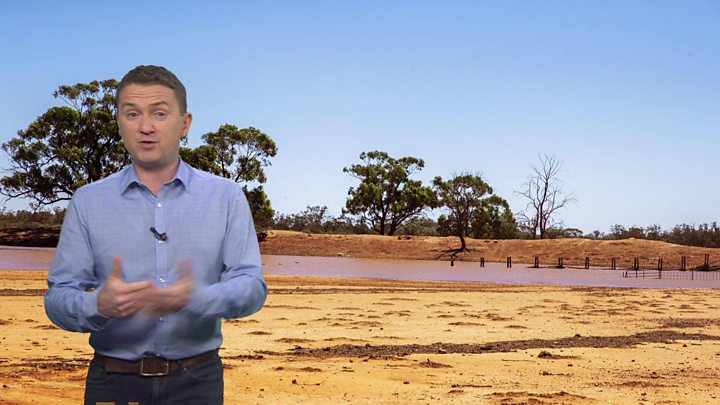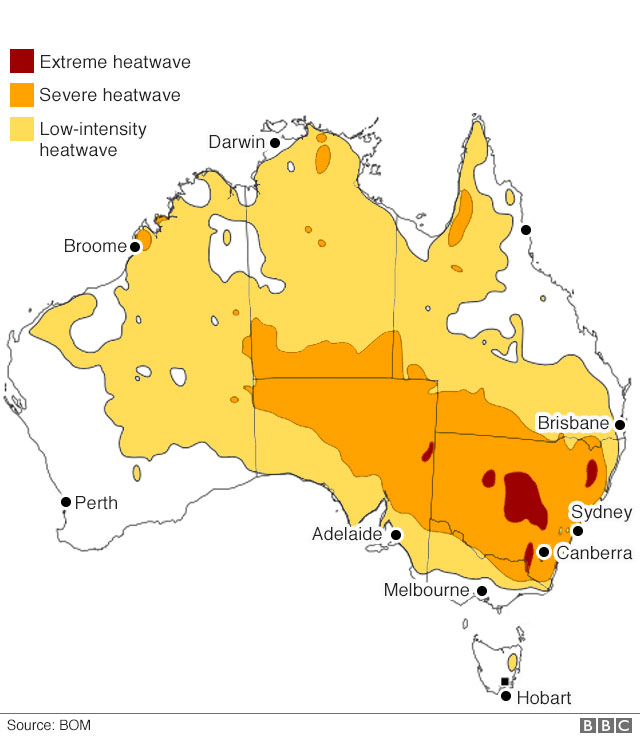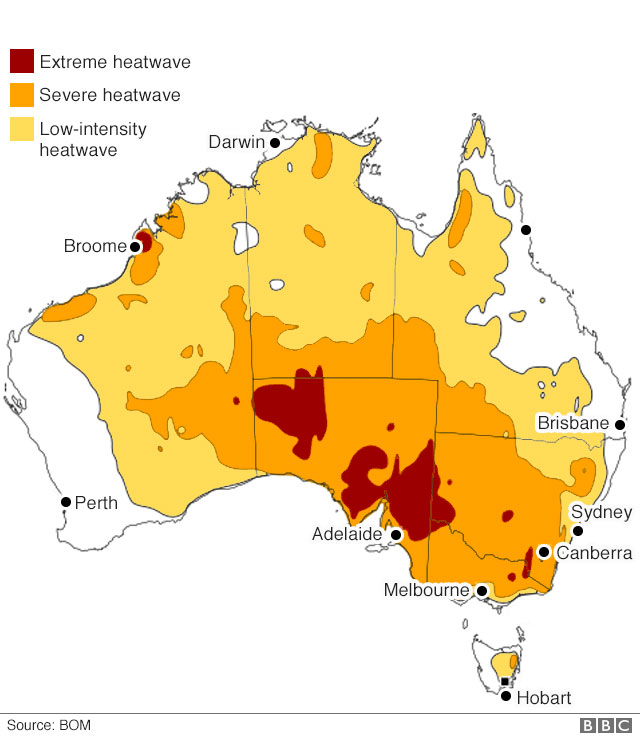[ad_1]

Image copyright
DANIEL KNOX/HORSLEY PARK RURAL FIRE BRIGADE
Thousands of firefighters have been deployed to tackle the blazes
A state of emergency has been declared in New South Wales, Australia, amid fears a record-breaking heatwave will exacerbate the state’s bushfire crisis.
The nation endured its hottest-ever day on Tuesday, but that record was smashed again on Wednesday – which saw an average maximum of 41.9C (107.4F).
Tuesday’s 40.9C had eclipsed the previous record of 40.3C, set in 2013.
Authorities in New South Wales (NSW) are currently fighting about 100 fires, in a crisis that has lasted months.
Premier Gladys Berejiklian announced a seven-day state of emergency due to forecasts of worsening conditions.
“The biggest concern over the next few days is the unpredictability, with extreme wind conditions [and] extremely hot temperatures,” she told reporters on Thursday.
Parts of NSW, of which Sydney is the capital, hit temperatures in the early-40s on Thursday. More intense heat was forecast for the rest of the week.
A state of emergency gives fire authorities additional powers to cope with the crisis. It is the second such declaration in NSW since last month.
Image copyright
EPA
A fire threatens the town of Tahmoor on Thursday
Bushfires have been raging in Australia for months, killing six people, destroying hundreds of homes and burning millions of hectares of land.
The crisis – worsened by tinder-dry conditions from a severe drought – has spurred criticism of the nation’s climate policies.
A lot of outrage on social media has also been directed at Prime Minister Scott Morrison for going on an overseas holiday during the emergency.
According to local media he is in Hawaii with his family. Some 500 people on Thursday protested outside his Sydney residence, demanding action on climate change.
What’s behind the heatwave?
Australia heated up this week as a mass of hot air swept east across the continent.
The dominant climate driver behind the heat has been a positive Indian Ocean Dipole (IOD) – an event where sea surface temperatures are warmer in the western half of the ocean, cooler in the east.
The difference between the two temperatures is currently the strongest in 60 years.
The warmer waters cause higher-than-average rains in the western Indian Ocean region, leading to flooding, and drier conditions across South East Asia and Australia.
According to the Bureau of Meteorology (Bom), Australia has warmed overall by slightly more than 1C since 1910, with most of the heating occurring since 1950.
Officials predict that 2019, on the temperatures recorded so far, will be among the four warmest years on record.
Bom has urged people to keep cool, drink lots of water and follow the advice of emergency services amid the latest heatwave.

Media playback is unsupported on your device
Temperatures are expected to exceed 45C in NSW, Victoria and South Australia this week.
Heatwaves are Australia’s deadliest natural disaster and have killed thousands more people than bushfires or floods.
What is the heat doing to the fires?
Officials have warned that the combination of high temperatures and strong winds could heighten the crisis.
Two major fires are currently burning near the outskirts of Sydney, including a “mega blaze” which has burnt over 400,000 hectares.
On Thursday, three firefighters suffered serious burns after being “enveloped by fire” near the town of Bargo, officials said. They added it was too early to say how many houses had been razed.
Smoke from the fires blanketed Sydney again, pushing air quality beyond “hazardous” levels in parts of the city.
A state-wide “total fire ban” has been put in place across NSW until midnight on Saturday.
Emergency services in the state of Queensland evacuated residents from dozens of homes on Wednesday as they battled to contain an out-of-control fire.
“You need to be ready to follow your bushfire survival plan. If you do not have a plan, or intend to leave, you should be ready to leave the area because the situation could get worse quickly,” they warned.
Have you been affected by the heat or bushfires? Share your experiences by emailing haveyoursay@bbc.co.uk.
Please include a contact number if you are willing to speak to a BBC journalist. You can also contact us in the following ways:
- WhatsApp: +44 7756 165803
- Tweet: @BBC_HaveYourSay
- Text an SMS or MMS to 61124 or +44 7624 800 100
- Please read our terms of use and privacy policy
[ad_2]
Source link



